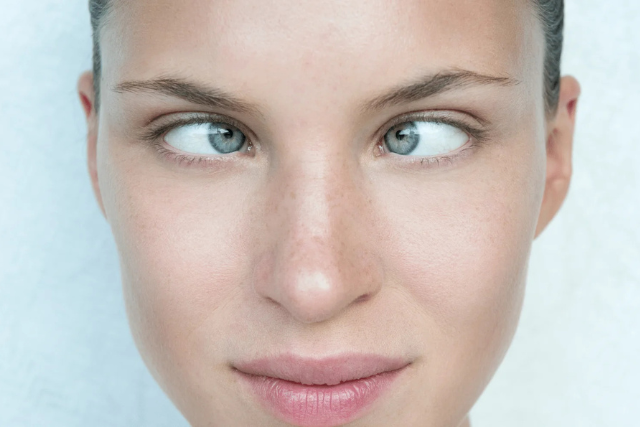- +91 8769296200
- care@nobleeyehospital.in
- +91 8769296200
- care@nobleeyehospital.in
Squint Correction

Squint or strabismus is known by various other names like deviating eye, crossed, and wandering eye. This is a peculiar disorder of eyes in which the eyes are not aligned properly.This simply means when one of the eyes looks straight then at the same time another one starts to turn upwards, downwards, inward, or outwards. This kind of misalignment in the eyes might remain constant in few patients while in others it might occur intermittently. Squint is not only a cosmetic problembut if not treated at the proper time can create another disease known as Amblyopia or most commonly known as lazy eyes. Amblyopia occurs in young children, so it is very important to identify & treat squint as soon as possible.
Causes of Squint
1. Hereditary issues- Squint could also be a result of hereditary conditions or problems which continuously running in the genetics of some families.
2. Refractive error – high refractive error in one or both eyes may lead to different types of squint.
3. C.N.S. causes – Sometimes lesion in the cranial nerve can cause squinting of eyes.
4. Long-term illnesses- Some long term illnesses can also result in squint eyes.
5. Injuries- Sometimes major injuries to the head can also lead to squinting of eyes since in these types of injuries a specific area of the brain is affected which controls the eye movement.
Symptoms of Squint
Since it is not easy to distinguish between a squint and an unusual look of the eyes, it becomes difficult to diagnose the Symptoms of squint. Sometimes squint is intermittent,this makes it even more difficult to identify the disease. Therefore, to properly assess and diagnose the squinting of eyes, a squint specialist should be consulted. Some of the most usual symptoms of squint are:
• Crossed eyes or Deviation of eyes: One eye is looking in different direction in comparison to other eye. This lead to cosmetic blemish. In case of any doubt, always consult squint specialist.
• Amblyopia(Lazy eye): Vision of squinting eye may be less than normal.During this condition, the brain starts to ignore the input from the squinting eye, which may lead to vision loss.
• Double vision: specially in paralytic squint may see double images, which can also hamper his routine activities.
• Photophobia: Children who are suffering from squint eyes are susceptible to bright sunlight and can’t ignore it and subsequently tend to close their eyes.
• Abnormal head posture: Some patienttilt or turn their heads and face a particular directionto utilize their eyes together or avoid diplopia.
Types of Squint
1. Esotropia(Convergent squint): eye of the patient suffering from this kind of condition turn inwards facing towards the nose.
2. Exotropias(Divergent squint): one eye of the patient turns outward.
3. Hypertropias and Hypotropias: In Hypertropias one of the eyes of the patient gets significantly higher than another one. Hypotropias is where one of the eyes gets very lower than the adjacent eye.
4. Paralytic squints: Squints caused due to paralysis of one or more extra ocular muscles of eye. It may be due to some kind of injury or decreased blood supply to the cranial nerve.
Squint Treatment:
Treatment of squint is medical management or surgery.
• Correction of refractive error: Squint caused by refractive errors can be corrected by prescribing suitable corrective spectacles to the patients.
• Treatment of amblyopia (Lazy eye): The problem of Amblyopia is treated with the help of occlusion therapy.
• Surgical Treatment: Sometimes it becomes necessary to take the help of surgical methods to treat the humongous problem of squint. This kind of corrective surgery can be completed in a single day. During the surgery, the muscles of the eyes are detached from their original insertion spot and are being properly and carefully shifted to a different spot. This amount of shifting is strictly and precisely measured with special prisms.

